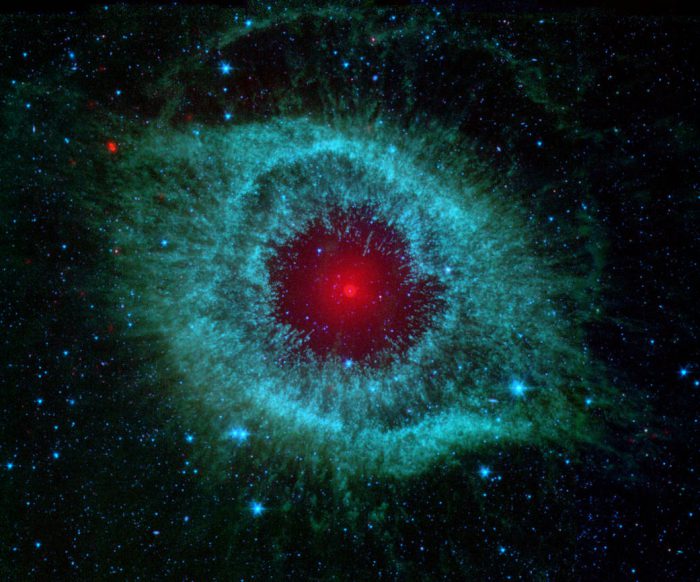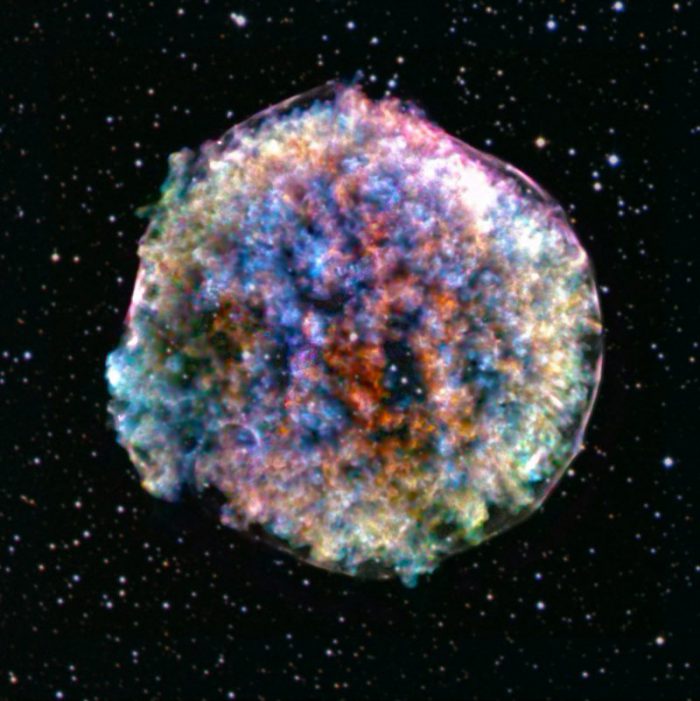Back in 1572, a star exploded in a massive supernova.
Well, actually ... about 8,000 to 10,000 years ago a star went supernova. But in November 1572, its brilliant light finally reached Earth's night sky. And the event was so spectacular that astronomers believed that a brand-new star had been born. One of these astronomers was a Dane named Tycho Brahe. He worked extensively on observing the event, writing a scientific work in 1573 called De Nova Stella, or "On The New Star".
And even if he got the specifics wrong (it was a star dying, not one being born), he used what he saw to correctly challenge the idea that the stars in the universe were unchanging and permanent. New stars, or stellae novae, were being born all the time, he argued. These terms are actually where we get the term 'supernova' from.
And in tribute to him, the leftover cloud of gases, or nebula, from that 1572 explosion is now known as Tycho's Remnant.
We think he would've felt honoured. Because his is no ordinary nebula.
Clumpy and bumpy

The Helix nebula, a somewhat more typical (though still extremely awesome) remnant of an ancient supernova. (NASA, JPL-Caltech, Kate Su [Steward Obs, U. Arizona] et al.)
We've discussed nebula before, and there is no set shape for them to take. They can be wispy and ghostly, thick and plumy, or wildly spread out and vivid. But it is rare for them to as clumpy and bumpy as Tycho's Remnant.
How did it get to be this way?
The compelling and strange nebula was recently imaged by the Chandra X-ray Observatory, NASA's most important X-ray telescope. (X-rays are high-energy electromagnetic radiation that are invisible to the human eye). These images were used to help drive a computer simulation of the cloud, and how it might have taken such a unique shape.
The findings? Researchers believe that when the star exploded, it did so in multiple places across the star's surface. This irregular explosion probably led to the irregular form of Tycho's Remnant. Probably.
Ultimately, it's difficult to know for sure. But that doesn't mean that we can't know enough to appreciate how cool it looks!
Watch the video below to get NASA's quick recap of the latest news on this phenomenon.
 Is it an ornament? A tree from above? A cosmic cookie? The stunning nebula called Tycho's Remnant is something else! (NASA/CXC/RIKEN & GSFC/T. Sato et al/DSS)
Is it an ornament? A tree from above? A cosmic cookie? The stunning nebula called Tycho's Remnant is something else! (NASA/CXC/RIKEN & GSFC/T. Sato et al/DSS)









